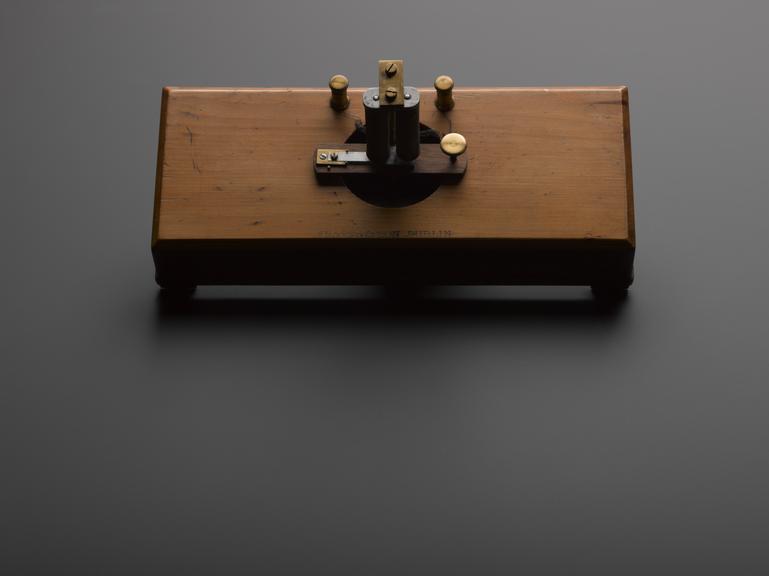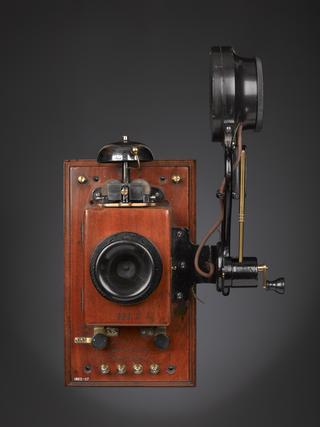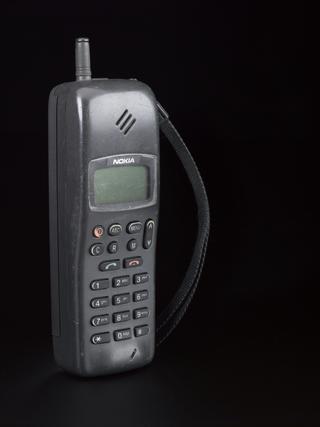
Facsimile 1865 homemade telephone, 1888
- maker:
- Stephen Mitchell Yeates






Facsimile of the telephone made in 1865 by Mr S. M. Yeates (improved Reis telephone), also made by S M Yeates, Dublin, Ireland, 1888.
This is a copy of telephone receiver originally made by S M Yeates, an instrument maker of Dublin, Ireland, who made improvements to the Reis receiver, which was invented in 1854. Yeates' receiver was demonstrated using a Reis transmitter at a meeting of the Dublin Philosophical Society held in November 1865. This copy was also made by Yeates, in 1888.
Details
- Category:
- Telecommunications
- Object Number:
- 1916-54
- Materials:
- wood (unidentified), metal (unknown), copper (alloy), plastic (unidentified) and textile
- Measurements:
-
overall: 115 mm x 250 mm x 100 mm, .31 kg
- type:
- telephone
- credit:
- Donated by Mr A. A. Cambell Swinton




